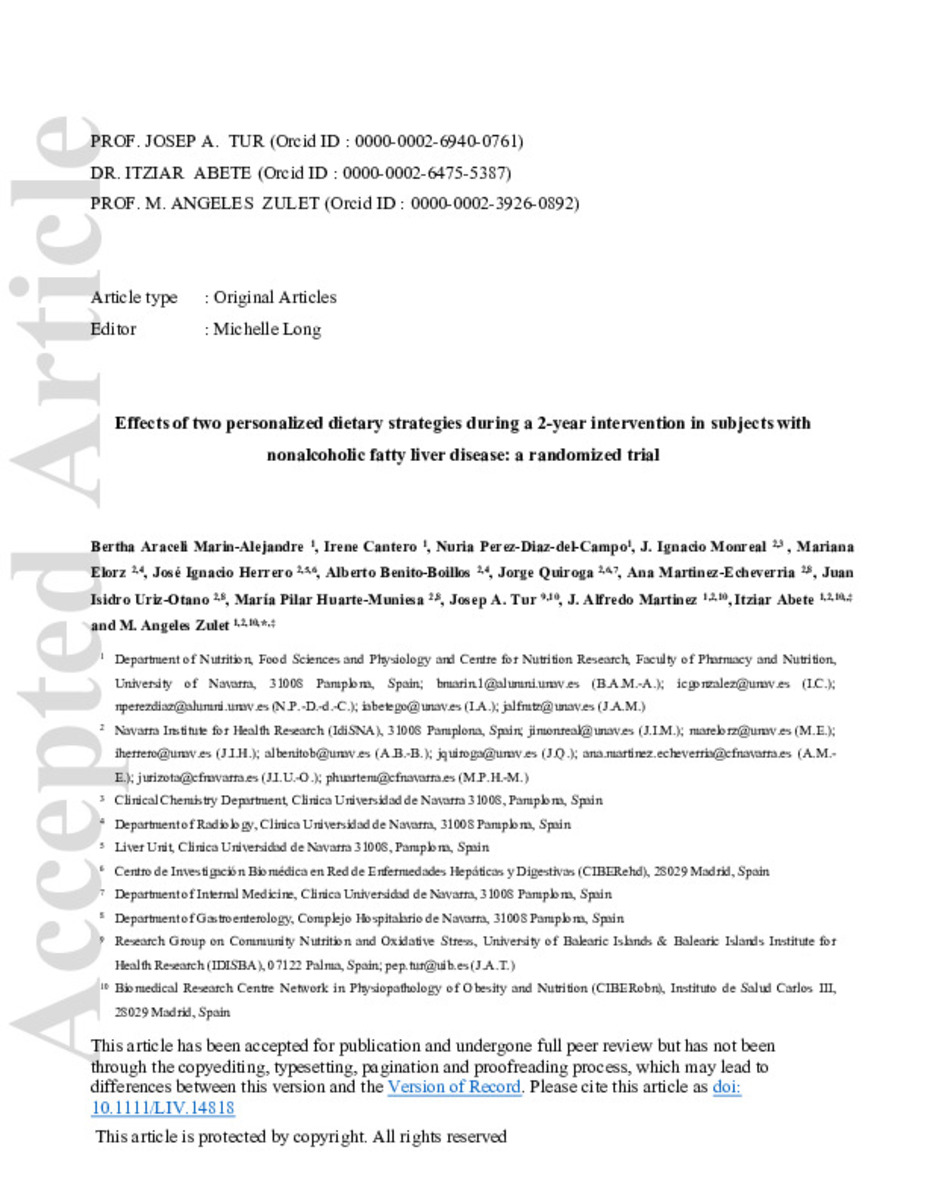Effects of two personalized dietary strategies during a 2-year intervention in subjects with nonalcoholic fatty liver disease: a randomized trial
Keywords:
AHA
FLiO
Mediterranean diet
NAFLD
Fatty liver
Obesity
Citation:
Marin-Alejandre, B.A. (Bertha Araceli); Cantero-González, I. (Irene); Pérez-Díaz-del-Campo, N. (Nuria); et al. "Effects of two personalized dietary strategies during a 2-year intervention in subjects with nonalcoholic fatty liver disease: a randomized trial". Liver international. 41 (7), 2021, 1532 - 1544
Statistics and impact
0 citas en

Items in Dadun are protected by copyright, with all rights reserved, unless otherwise indicated.







